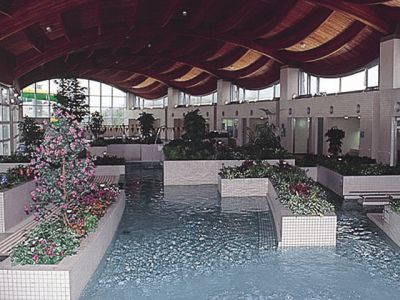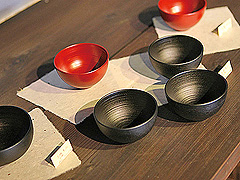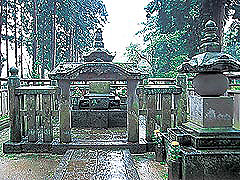
Daiko Onsen
A day-trip hot spring facility at Okukuji-Daigo Onsen, where you can enjoy apple baths from September to January and iris oyu from May to June. You must also see the ceramic walls of the bathhouse by German potter Gerd Knapper.
Info
Business Hours
Price
Spot Category

フォレスパ大子のバーデハウス
The information provided reflects the details available at the time of the survey.
Please note that facility details may change due to the facility’s circumstances, so please check for the latest information before visiting.
This content has been translated using machine translation.
Information provided by: JTB Publishing
The content uses an automatic translation service, which is not always accurate.
The translated content may be different from the original meaning, so please understand and use it.

A day-trip hot spring facility at Okukuji-Daigo Onsen, where you can enjoy apple baths from September to January and iris oyu from May to June. You must also see the ceramic walls of the bathhouse by German potter Gerd Knapper.

It is a workshop run by Toru Tsuji, a wood lacquer craft writer who has been selected at the Japanese Traditional Crafts Exhibition, and uses the Meiji-era Kimono-ya's Sezo as a shop. The vessel is equipped with a large lacquer, which is considered to be the highest quality. There are 10,2960 yen in zelkova bowls, and 8640 yen in flowers using lacquer raw wood after sap is taken.

奥久慈地方にある面積60ha以上の広大な自然公園。敷地内には自然や温泉資源を利用した多目的温泉プール「フォレスパ大子」やオートキャンプ場「グリンヴィラ」などの施設があるほか、多目的運動広場やテニスコート、自然の地形を生かした大型アスレチックなども備えられ、リゾートとしても最適。

The year of Oei 21 (1414) is a famous temple of the Jodo sect, reportedly as the Genjon. A great deal of donation was made by the Tokugawa family to rebuild the main hall and bell tower (currently under reconstruction facilities and cannot be seen), from where they were deeply devoted to the tenth-generation Ryokujinjin, and established it as a bodhi-ji temple. The main hall, which is the best of the temple architecture of the early Edo period, is renovated in 2007. You can feel the power of the Tokugawa shogunate in the Buddhist tools and furnishings. On the left side of the main hall is the tomb of Chihime.

A temple of the Jōdo Shinshu Hongan-ji school. The first generation of the Seiki family, Asamitsu, who also participated in the shogunate as a sensei crowd, invited the younger brother of the clan, Shinbutsu, to open. It is said that the name of the temple, the name of the temple, is derived from the name of the law that Asamitsu came to the house and gave it to him. It holds a number of cultural treasures, including the "Shōjo Kanashu", which is said to be the autograph of Kinji, as well as portraits and wooden statues of the morning light, the Mireya Gate, and the Nijomon. At the back of the precinct, where there is a large ginkgo tree and a bronze statue of the saint, there are tombs ranging from the first morning light to the fourth generation Tokihiro.

An ancillary facility of the Kasumigaura City History Museum, which was a relocation of a wealthy local farmhouse from the Edo period, consisting of two buildings: a thatched main building and Itakura, which used to be a grain warehouse.
This website uses cookies so that we can provide you with the best user experience possible. Cookie information is stored in your browser and performs functions such as recognising you when you return to our website and helping our team to understand which sections of the website you find most interesting and useful.
Strictly Necessary Cookie should be enabled at all times so that we can save your preferences for cookie settings.
If you disable this cookie, we will not be able to save your preferences. This means that every time you visit this website you will need to enable or disable cookies again.
